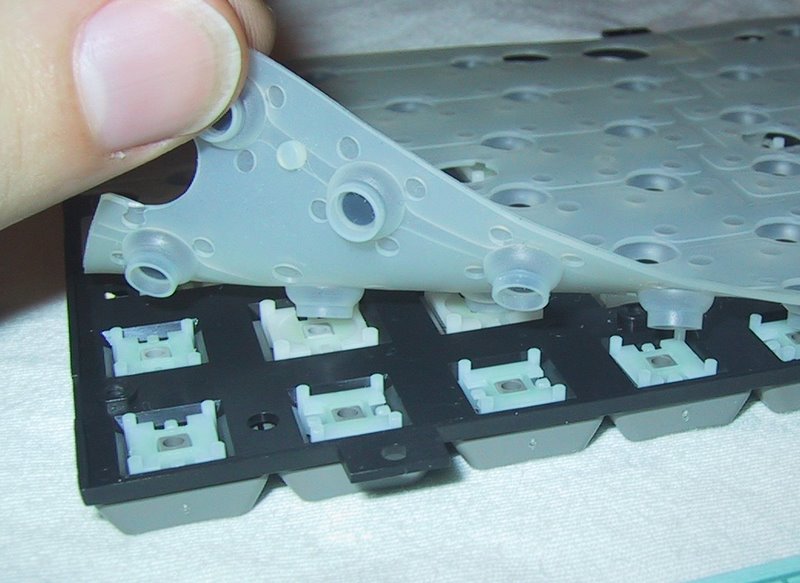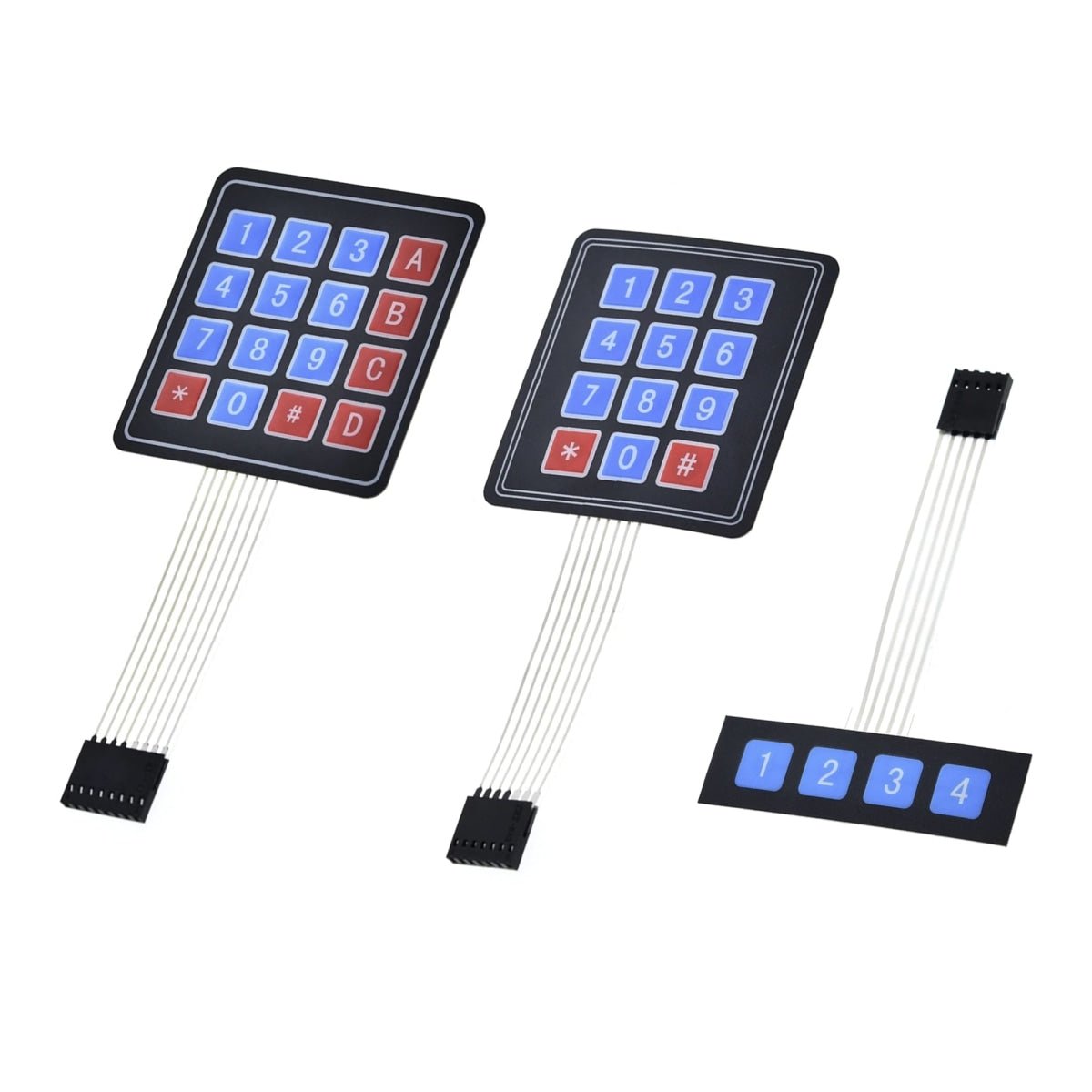The Advantages of Making Use Of Membrane Switches in Customer Electronic Devices
Membrane layer switches are increasingly recognized for their significant benefits in customer electronics, specifically in boosting individual interaction and improving production processes. The flexibility in style enables for tailored options that fulfill diverse customer needs.
Enhanced Customer Experience
In today's competitive landscape of customer electronics, improved customer experience is extremely important; nearly 85% of individuals focus on user-friendly interfaces. Membrane layer switches play an important duty in attaining this degree of usability.
The responsive responses given by membrane layer switches is vital for guiding customer actions, making certain that commands are registered precisely. This responses device heightens and lessens mistakes customer contentment, cultivating a positive partnership in between the user and the tool. Furthermore, the personalized nature of membrane changes permits makers to customize interfaces to certain user requirements, making tools more accessible and welcoming.
In addition, membrane layer buttons can incorporate backlighting and graphic overlays, additionally boosting exposure and functionality in varied settings. This versatility makes certain that gadgets stay functional and easy to use, no matter the setup. On the whole, the combination of membrane switches into consumer electronics considerably improves individual experience, driving brand commitment and fulfillment in a progressively affordable market.
Affordable Manufacturing
Customer electronics suppliers are constantly seeking means to stabilize quality with price, and membrane buttons provide a compelling solution for affordable production. membrane switch. These elements are naturally simpler than standard mechanical switches, which minimizes both manufacturing prices and intricacy. The lightweight style of membrane switches over enables reduced shipping expenses and simpler combination into portable gadgets, even more boosting their allure in an affordable market

Suppliers can create membrane switches in high volumes, taking advantage of economic climates of scale. This automation ability makes certain regular high quality while significantly decreasing per-unit costs. Additionally, the materials used in membrane layer buttons, such as polyester and polycarbonate, are frequently more economical than those needed for traditional switch technologies, adding to total expense financial savings.
The production procedure for membrane layer changes commonly needs less actions and much less labor contrasted to other button types. This streamlined strategy not just minimizes labor expenses yet additionally accelerates time-to-market, enabling companies to react swiftly to consumer need. As a result, the combination of decreased product expenses and effective production processes settings membrane layer switches over as a smart financial investment for manufacturers intending to supply top notch customer electronic devices at affordable cost factors.
Design Versatility and Modification
While traditional mechanical switches frequently enforce restrictions on design due to their bulk and required installing devices, membrane buttons provide unparalleled adaptability and personalization options for customer electronic devices. This cutting-edge technology enables developers to create smooth, inconspicuous interfaces that can flawlessly incorporate into different product aesthetics, from mobile phones to kitchen area appliances.
Membrane layer switches can be created in virtually any shape or size, enabling makers to customize the design to details ergonomic and useful demands. This flexibility not just boosts customer experience yet likewise permits imaginative designs that line up with brand identification. In addition, the use of printed graphics on membrane layer switches over uses the possibility for lively shades and detailed layouts, which can be easily changed without substantial price effects.
Additionally, membrane buttons can incorporate several performances right into a solitary layer, decreasing the demand for several elements and streamlining assembly processes. This structured layout strategy minimizes space and weight, making it optimal for compact consumer electronic devices. Overall, the layout adaptability and personalization capacities of membrane changes empower manufacturers to innovate, ultimately bring about even more engaging and user-friendly items.
Resilience and Dependability
As modern technology continues to progress, the resilience why not look here and integrity of membrane switches have ended up being crucial factors to consider for makers in the consumer electronic devices industry. Membrane layer buttons are developed to withstand severe ecological problems, consisting of temperature changes, wetness, and dirt direct exposure. Their robust building and construction frequently entails multi-layered products that provide a reliable obstacle against pollutants, guaranteeing longevity and consistent efficiency.
In enhancement to ecological resistance, membrane layer switches over deal remarkable mechanical integrity. Unlike traditional mechanical switches, which might use out gradually, membrane layer switches use a closed style that reduces the risk of mechanical my link failure. The lack of moving parts not just boosts their life expectancy but also minimizes damage, making them perfect for high-usage applications.
In addition, membrane switches can withstand a substantial variety of actuations without loss of capability, often exceeding numerous cycles (membrane switch). This resilience translates to decrease replacement prices and reduced downtime for producers and customers alike. On the whole, the combination of ecological resilience and mechanical reliability makes membrane layer changes a critical option for consumer electronic devices, guaranteeing that gadgets continue to be efficient and operational throughout their intended life expectancy

Streamlined Product Growth
The durability and reliability of membrane layer changes substantially add to streamlined product advancement in the customer electronic devices market. By incorporating these switches early in the style process, makers can lower the intricacy and number of components called for in their items. Membrane buttons are lightweight and portable, permitting a lot more reliable room use within tools, which can lead to simplified assembly procedures.

The simplicity of manufacturing membrane layer buttons likewise plays an important role in product development. With contemporary printing strategies and products, manufacturing can be scaled efficiently, decreasing preparations and minimizing waste. This results in lower production prices, enhancing total productivity.

Verdict
In verdict, membrane layer switches significantly enhance consumer electronics by providing an enhanced individual experience, economical production procedures, and functional layout choices. The combination of membrane layer changes stands for a calculated choice for makers looking for to maximize item design and efficiency.
Membrane switches are increasingly recognized for their significant benefits in consumer electronic devices, specifically in improving customer communication and streamlining production processes. Additionally, the products utilized in membrane layer switches, such as polyester and polycarbonate, are typically much less costly than those needed for traditional button technologies, adding to general expense savings.
The manufacturing procedure for membrane switches over usually needs less actions and much less labor compared to other button kinds. Unlike traditional mechanical switches, which may use out over time, membrane switches use a sealed layout that reduces the threat of mechanical failure.In final thought, membrane changes dramatically boost consumer electronic devices by supplying an improved individual experience, economical production processes, and functional style choices.
Comments on “Exploring the Different Types and Features of a Membrane Switch”